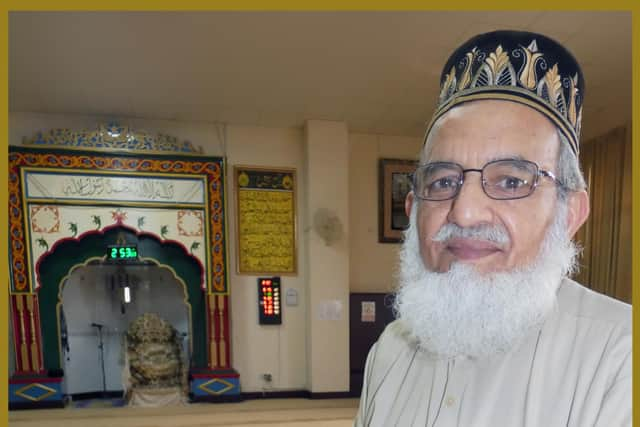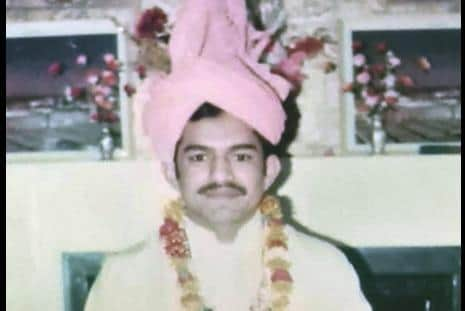Memories of Ramadhan in 1970s Dewsbury as Muslim families prepare for one of the most important religious events in their calendar
and live on Freeview channel 276
Muslim families living across Dewsbury, Batley, Heckmondwike and Cleckheaton are busy getting ready to prepare for what is one of the most important religious events in their calendar.
The faithful will be waking up shortly before dawn every morning in Ramadhan for a light meal called “Sehri”. The day's fasting shall then begin - and will last until sunset.
Advertisement
Hide AdAdvertisement
Hide AdFasting in the holy month of Ramadhan is a highly spiritual time when Muslims do not eat or drink during daylight hours. It is seen as another form of worship alongside the five daily “Namaz” prayers read by practising devout Muslims every day of their lives, either in their local mosque or at home.


It is customary for Muslim communities to focus even more than usual on their worship in Ramadhan. The faithful will spend hours reading the Koran or praying.
Local mosques are open around the clock. Corner shops are also busy during the afternoons selling fresh fruit, yogurts, Basmati rice, halal meat and Arabic dates.
Homes in the evening are then lit up shortly before dusk as preparations are made to “close” the day's fasting with a mouth-watering family Indian cuisine and a variety of desserts.
Advertisement
Hide AdAdvertisement
Hide AdBut what was the month of Ramadhan like for those Indian and Pakistani Muslims who migrated over fifty years ago from the sub-continent to settle in our local area?


One of these men was Haji Masood Khan, of Queen Street in Ravensthorpe, who first came to Dewsbury at the age of 13 in November 1971.
Speaking to the Reporter Series as part of the Kirklees Faith Network's “Ravensthorpe Stories In A Suitcase” project, he gives an insight on the social history of our local area and how its impact was felt on those post-war Ramadhan months of the 1970s.
"I came to Dewsbury with my mother in November 1971,” he said. “That actual November coincided with the holy month of fasting.
Advertisement
Hide AdAdvertisement
Hide Ad"Because Muslims follow the lunar calendar, the start date for Ramadhan changes every year by roughly ten days, moving from the summer back into the winter months.
"I can remember clearly the Islamic date was the eighth day of Ramadhan and it was snowing as the aeroplane I had boarded in Pakistan landed on the runway at Heathrow Airport.
"Life seemed to be going on as normal despite the snowfalls as I came out of the airport with the rest of my family.
"I had already done a week's Ramadhan fasting under the warm Pakistani climate at my ancestral village house back in Kashmir. But the contrast was huge after I set foot inside my new home on Queen Street in Ravensthorpe.
Advertisement
Hide AdAdvertisement
Hide Ad"The only weather I saw through the windows of this property for the remaining three weeks of Ramadhan in that year 1971 was snow, sleet and fog, but no sunlight!
"Anyone who has had to go through the experience of moving to another country will understand how hard it can be getting used to a new environment. The culture shock can be immense. I felt homesick and wondered what had happened?
"Yet the strong community spirit existing amongst the small number of Pakistani households at that time in Ravensthorpe helped me a great deal. We were only a few families, but everyone cared so much for each other in those years.
"I had been born in a devout traditional Sufi-Muslim family. So, I began fasting on the next day after arriving into Ravensthorpe.
Advertisement
Hide AdAdvertisement
Hide Ad"Looking back, I can remember this was an era of heavy icy rainfalls and cold freezing temperatures. Our small terraced homes did not have any gas heaters - let alone boilers or central heating! We lived without these luxuries.
"There was not even any insulation in the attic or walls. Double glazed UPVC window frames were not around in those decades. Only a single sheet of thin glass dripping with heavy condensation and stuck with some soft putty in wooden window frames separated our indoors from the harsh elements outside.
"My mother was always the first one brave enough to get up from bed at half past four in those cold dawn Ramadhan hours to prepare everyone's Sehri meal.
"The first thing she did after leaving the comfort of her warm blanket, was to go downstairs into a dark cellar in those cold icy conditions to pick up some coal in a shovel for lighting up in the living room's fireplace. A lot of matches used to get wasted just to light the damp coal in that drab chilly early morning atmosphere.
Advertisement
Hide AdAdvertisement
Hide Ad"Her hands and delicate fingers would be cold and numb by the time she had warmed the fireplace. Yet my mother's resilience was amazing.
"She was after all from that good old 'waste not, want not' - and 'complain not' - generation.
"We were lucky, unlike many other families, to have a heated geyser in the kitchen giving us warm water. Otherwise, most of the first and second generation Pakistani migrants who came to the local area in those days had to put up with using icy cold tap water running out of their sinks.
"My mother would eagerly wash her hands with the geyser's warm water, and then heat up a pot of curry she had usually prepared the evening before. Four plates of curry, along with four Paratha chapattis and a warm kettle of 'desi' (traditional) Indian tea, was always ready on the table by the time my father and I had got out of bed.
Advertisement
Hide AdAdvertisement
Hide Ad"The fourth plate of curry was for my uncle Mahmood Khan who also lived with us in that era.
"The name in English culture for 'Parata' is pancake. The dawn Sehri meal ended for everyone with a glass of water.
"Drinking water at dawn was important to help the body stay hydrated as there was to be no more eating or drinking for the next ten hours!
"Because I had only recently arrived into the country, it became clear to my parents that a school place for me would take several months to get sorted.
Advertisement
Hide AdAdvertisement
Hide Ad"I was therefore lucky to enjoy my first Ramadhan in Ravensthorpe fasting and praying at home - whilst all the other kids had to fast and then walk to school either in knee deep snow or through constant heavy rain.
"Daylight hours were obviously short in the winter months, so the day's fasting always ended at four o'clock in the afternoon.
"The family used to gather around a table in the living room. There was no mosque in Ravensthorpe to give guidance on the Ramadhan fasting times during that period. So, everyone's eyes would be on a small clock waiting for its hands to reach the exact time of sunset when we could begin eating again.
"The meal after the day's fasting is known as 'Iftari'. My mother was the one who, as usual, prepared this special Ramadhan supper.
Advertisement
Hide AdAdvertisement
Hide Ad"The Iftari meal for our family usually began with some delicious Arabian dates, along with a plate of sliced apples, bananas, oranges and grapes. The fresh fruit was often followed by a plate of curry with chapattis, and everything ended with a bowl of warm custard or hot rice pudding for everyone.
"I always helped my mother to quickly clear the dishes and plates off the table after the food had been eaten.
"My father meanwhile had to lift the table onto our settee to make space in the living room for the evening's special 'Tarawih' prayers. Uncle Mahmood's chore was to lay out some prayer mats onto the living room's lino.
"Our neighbours would then turn up to pray in the crowded living room. My uncle Mahmood lead these 'Tarawih' prayers as the Imam.
"Ramadhan was very different compared to these days, and some of the small terraced houses like ours on Queen Street were a hub of religious activity in that post-war era.”